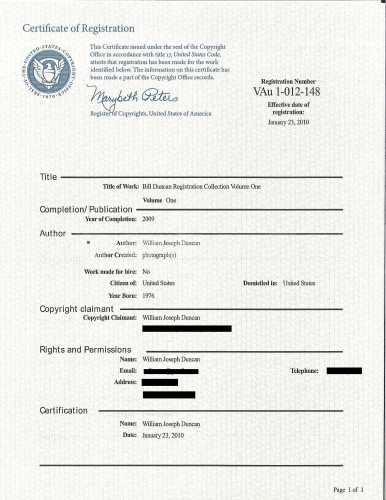I’m sure that anyone who has spent time viewing photographs in an online setting has seen them – those watermarks or scripts that contain the ©, often accompanied with text notifying the viewer that the photographer or graphic artist owns the copyright to that image. But, did you know that this is completely unnecessary?
Many photographers place elaborate and beautifully designed watermarks across their images. There is nothing wrong with this, especially for those photographers who are interested in building their brand, e.g., wedding or portrait photographers. But I often find the watermarks are often more interesting or compelling than the images they emboss. It is my opinion that collectors of nature photographs are more interested in the final product, rather than in a name. Besides, if one makes a name for oneself, the photograph need simply be signed to identify the artist.
I have “signed” my photographs with generic text or my watermark for years, just as an artist would make their mark or signature when finishing a painting. I am turned off by the idea of marking a hard worked for photograph with a sign of commerce, especially if it was unnecessary in protecting my rights to my work. What I am sharing in the remainder of this post is mostly from what I remember from an Intellectual Property class I took during my Master’s program along with some light research to make sure there have been no significant changes.
Did you know that the instant you take/make a photograph your image has copyright protection that you own? That’s all there is to it. There is nothing else you need do to have that protection. As the owner of the copyright you are provided certain rights that can be found here: U.S. Copyright Act at 17 U.S.C. 106.
Many of you have probably heard of ‘registering a copyright’. If a photographer does not register their copyright with the Library of Congress prior to an infringement of the copyright, then the photographer can only cause two things: 1) cease and desist of the infringement, and 2) recover only actual damages caused by the infringement. “Actual damages” equates to what you would normally be paid (fair market value) for an image that subject in the specific infringement. If, like many nature photographers, you don’t sell your works, then the best you can hope for is for the infringement to be stopped. You will likely not receive payment.
Taking the step to register your copyright with the LoC will allow the photographer to collect statutory damages in the event of an infringement. Depending on the circumstances, e.g., the willfulness of the infringing party, statutes allow for the collection of between $750 and $150,000. One must still prove that they attempted to protect their copyrighted work, but there have been more than a few artists that have made a living by simply collecting these settlements of their infringed upon registered copyright.
I registered my copyright to a few hundred photos a few years back. There is a small fee and some work involved, but I remember it being a relatively painless process. I have not continued to do so because I feel I take reasonable steps to keep my work protected, e.g., not posting image files online with anything larger than 1000 pixels on the longest edge, and that I know there are many greater photographers that potential infringers will target. See below for an example of a Certificate of Registration.
I believe I submitted 500-1000 images on a single CD-ROM (the standard method at the time). I recommend downsizing the files, which can be quite small and still be identifiable. I can’t remember the specifics, but they were somewhere around 50-100 pixels on the longest edge. You can easily do this in a batch process.
There is nothing necessarily wrong with adding that copyright symbol to your image and I realize there are some advantages in having it there. However, I wanted to make sure those of you reading this know that this is an unnecessary attachment to your well crafted visual property.
That’s about it for the bare basics of copyright protection for the nature photographer. There are other details if one delves more deeply. Rules change a bit once you leave this country, but copyright protection can be found in most area of the globe. If you have any questions that were not covered here or would like to offer a different viewpoint, please let me know by using the comments section of this post.
Until next time
-OZB
